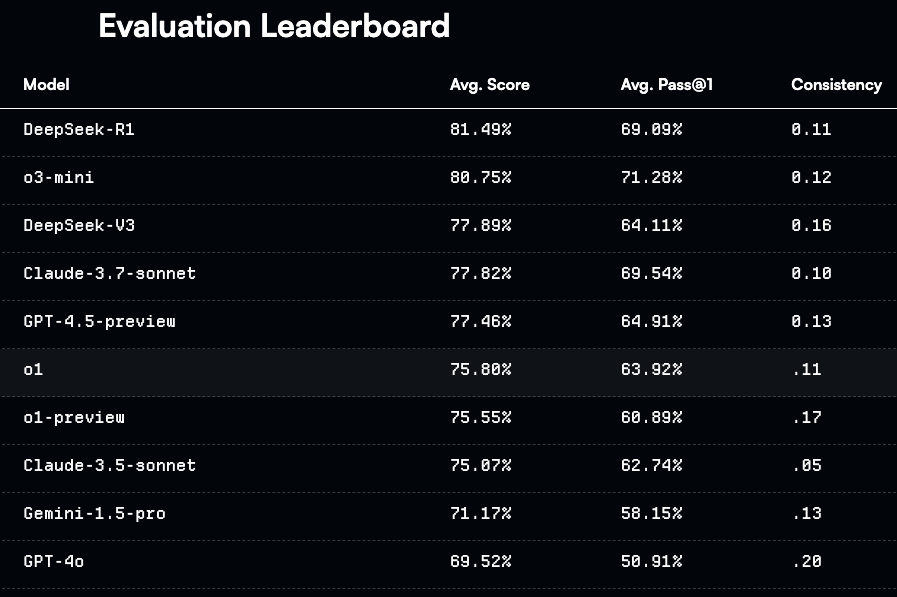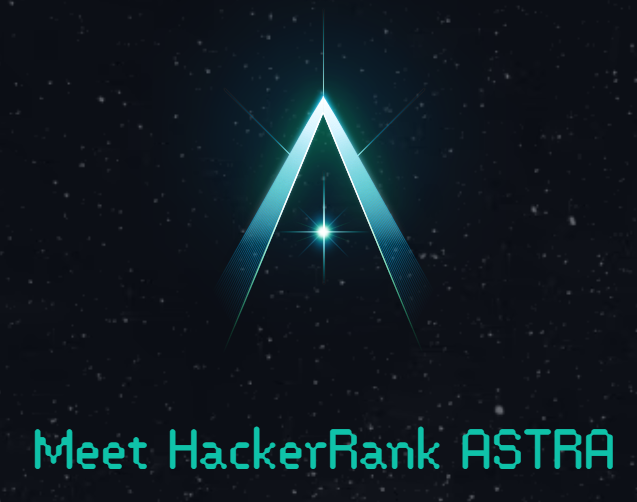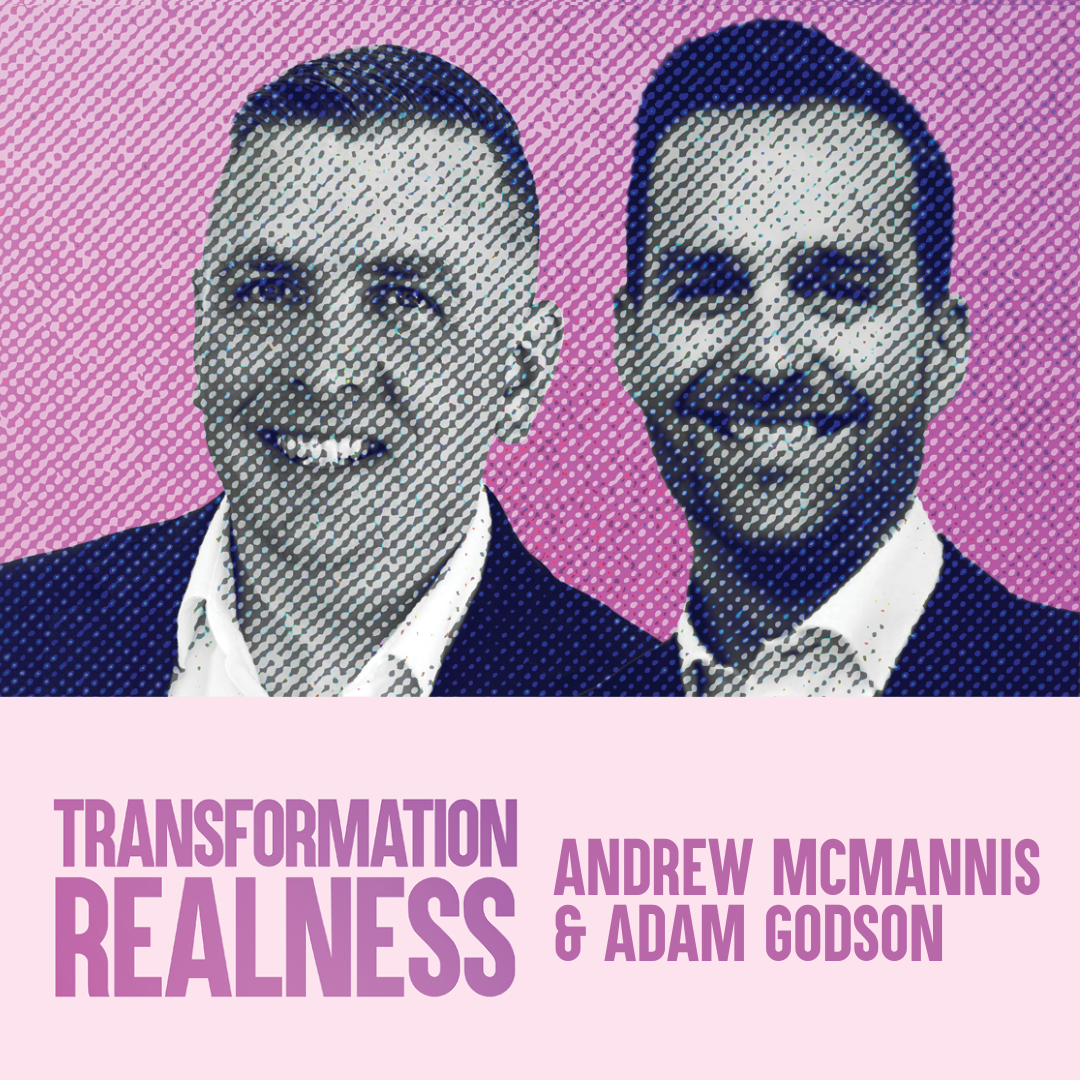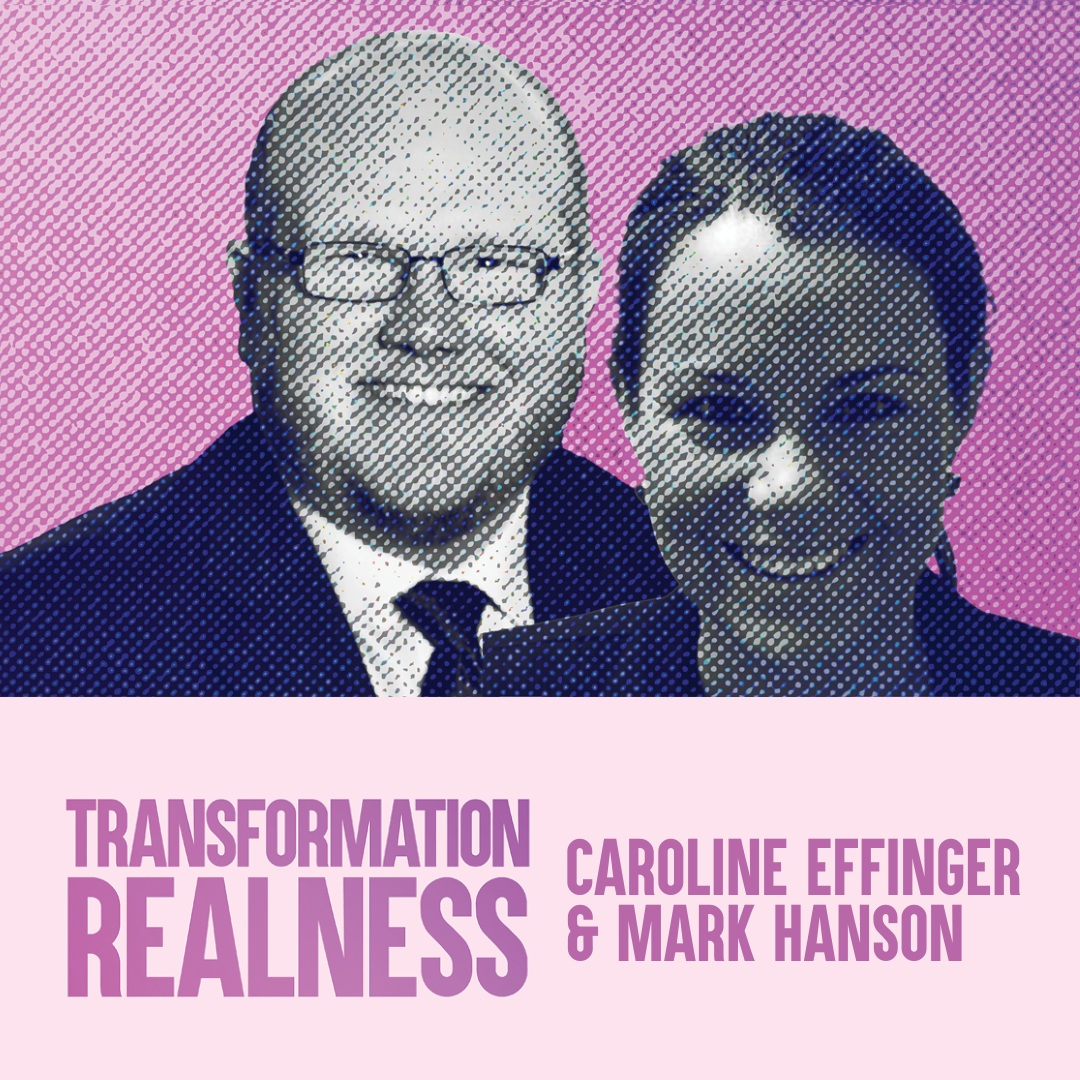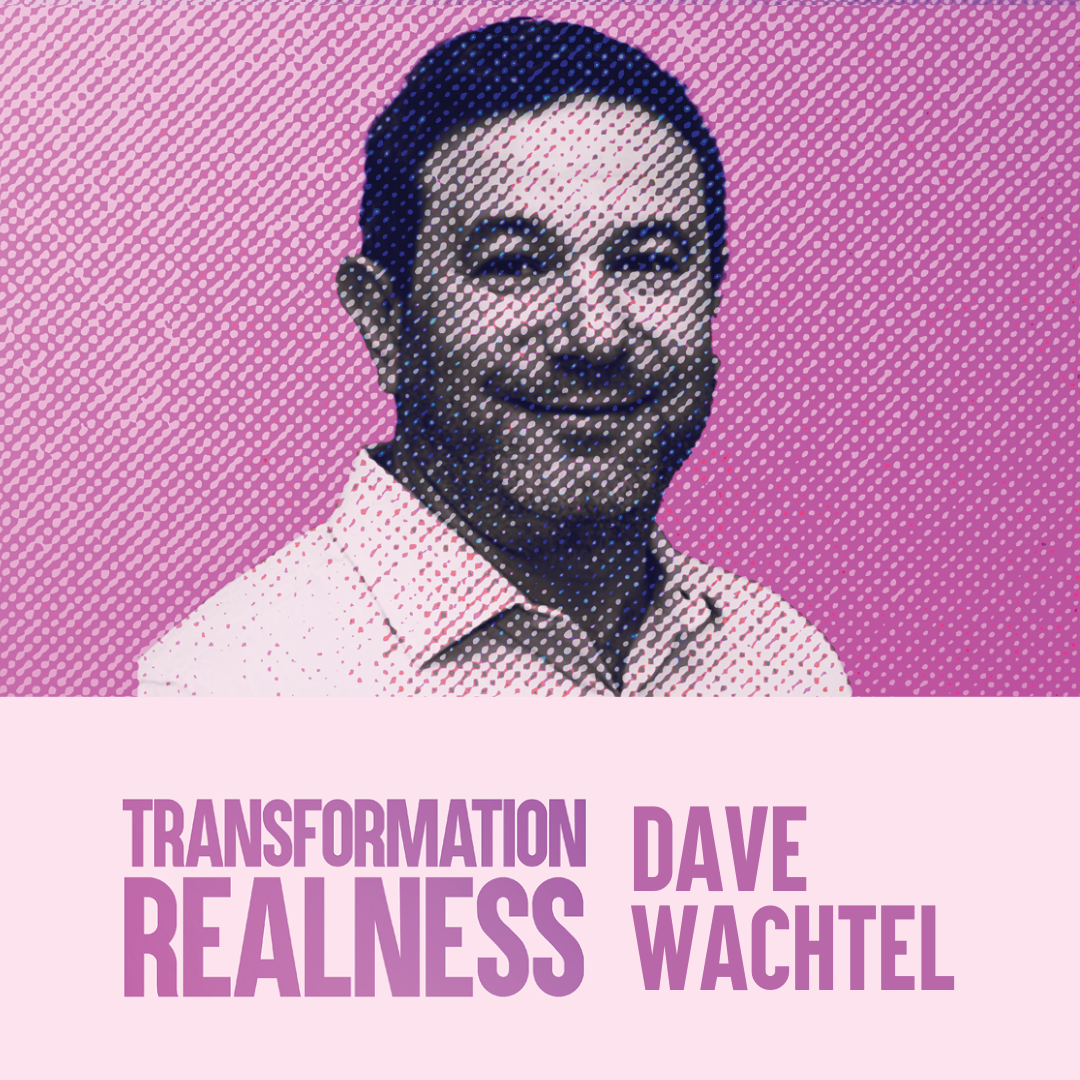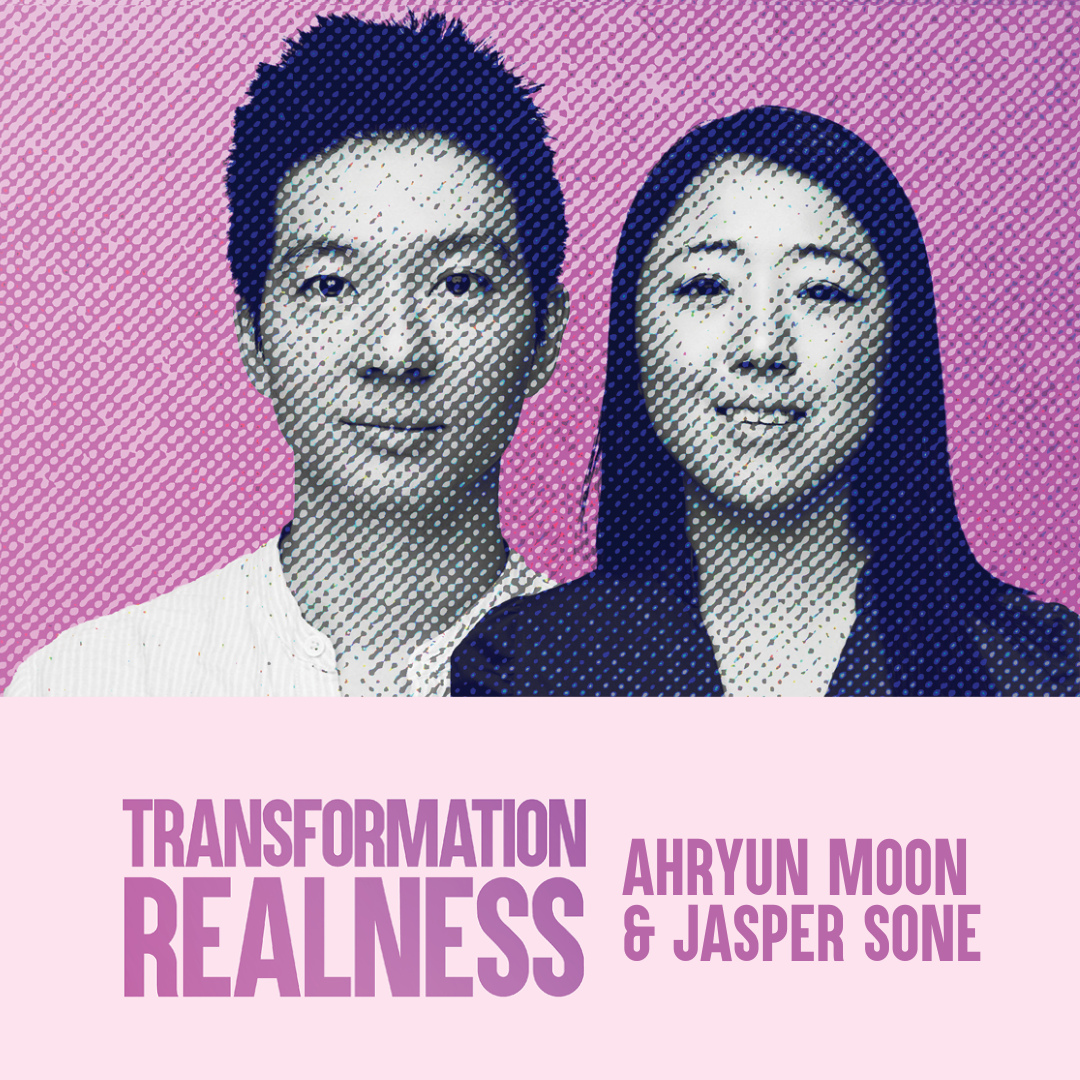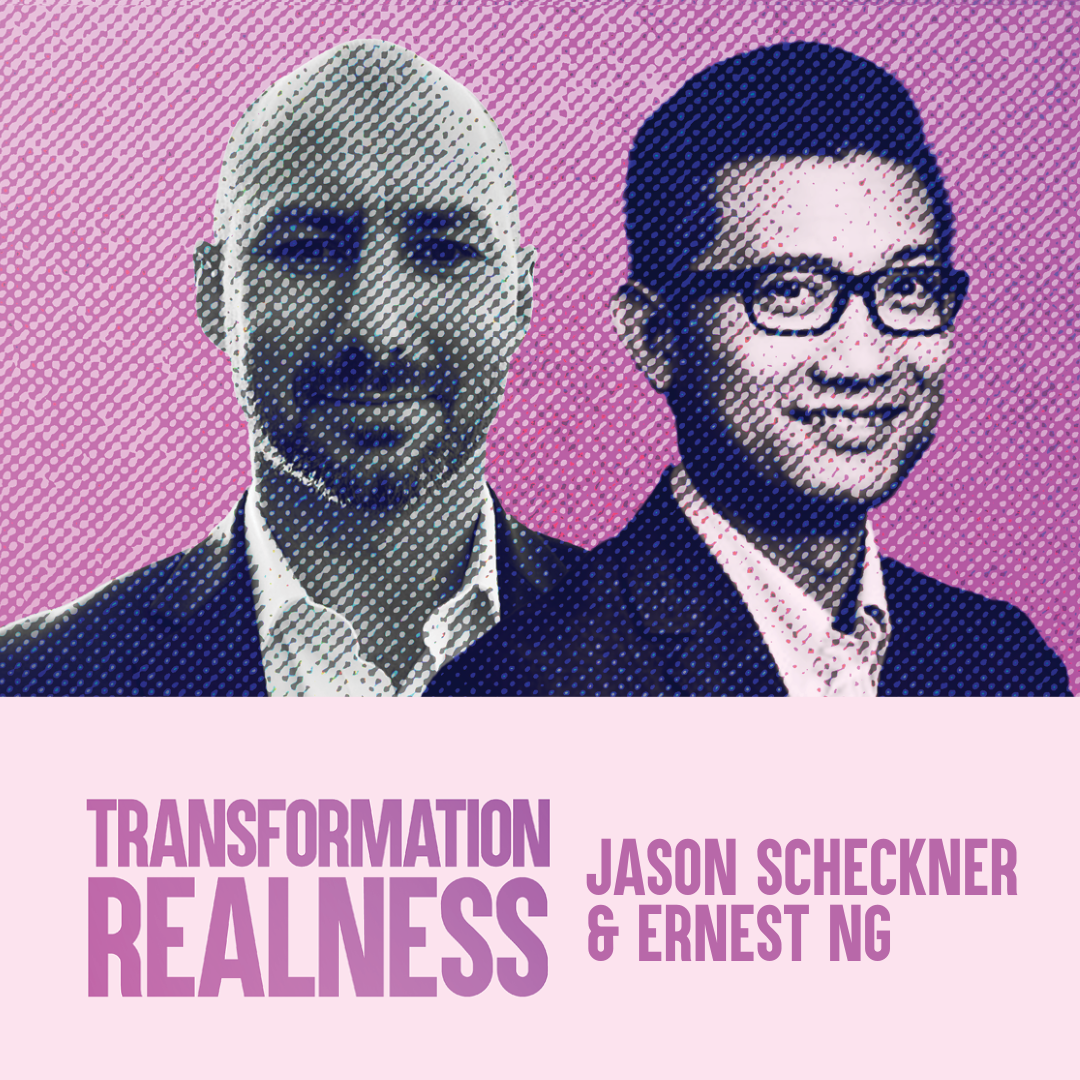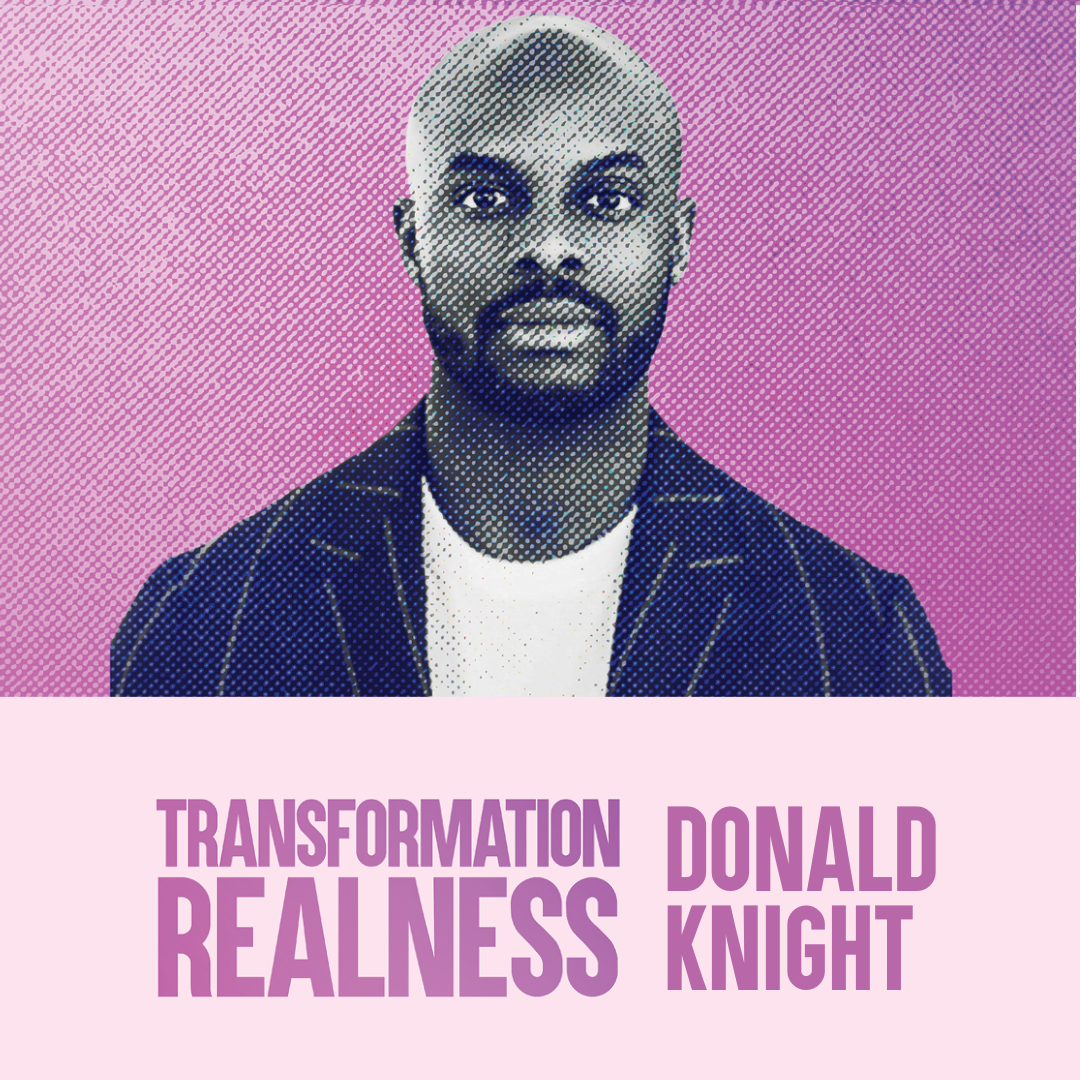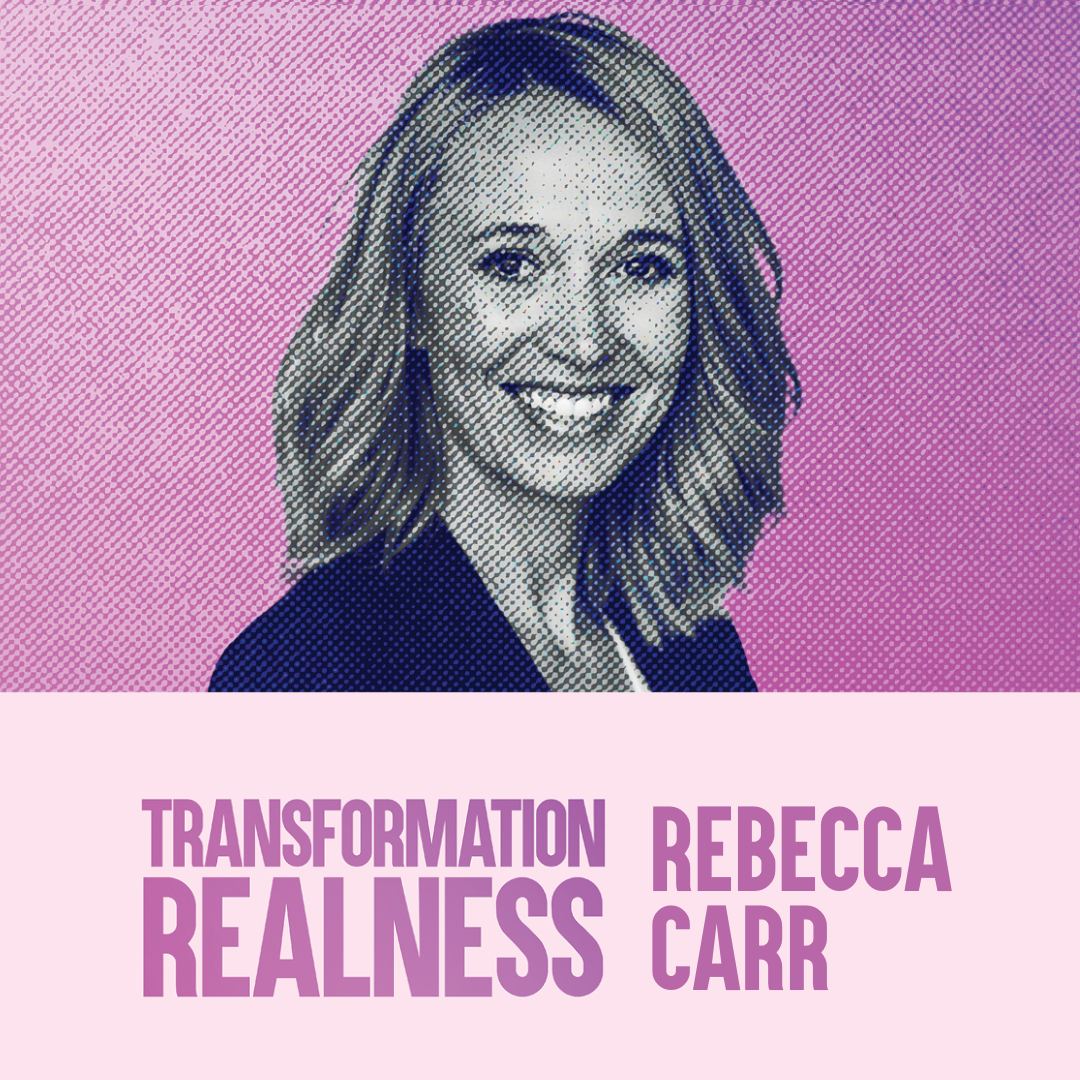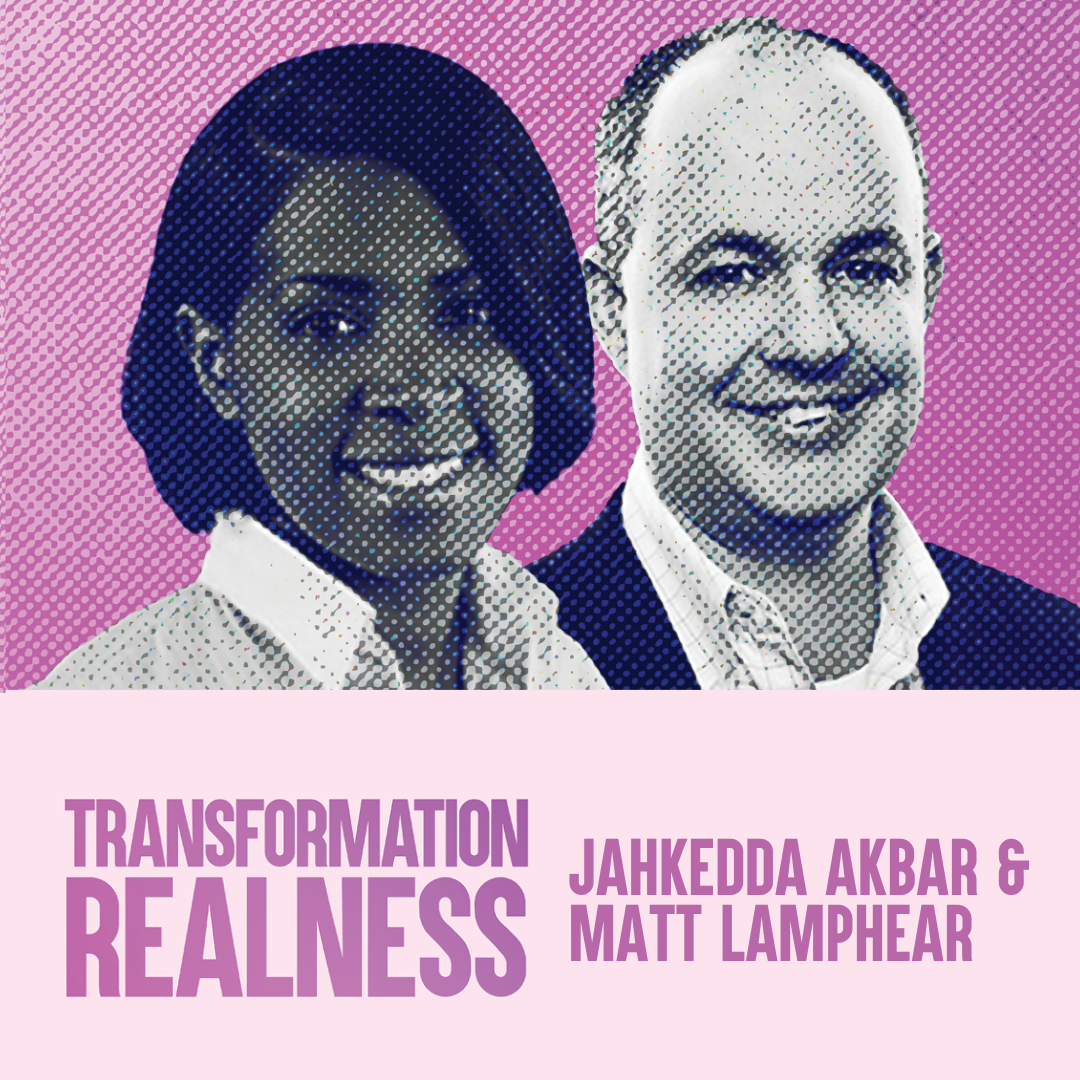In this episode of Transformation Realness, we’re diving deep into one of the buzziest topics in HR today: skills. I know, I know — skills have been everywhere lately, and let’s be honest, we’re all a little skeptical when buzzwords start flying. But trust me, this episode is different.
Joining me are two experts from Lightcast, Mark Hanson and Caroline Effinger, who are here to break down what’s real, what’s working and what still needs fixing in the world of skills-based transformation.
Mark leads strategy, skills and people analytics at Lightcast, while Caroline heads up their consulting work, helping organizations take skills strategies from theory to action. Together, they’re here to demystify the buzz and share how skills can connect hiring, learning, workforce planning and more.
In this episode, we’ll explore how to build a skills-based foundation, why tech and data aren’t enough on their own and how Lightcast’s partnership with Workday is helping organizations align strategy with execution. Let’s get real about what it takes to make skills work.
Building a Skills-Based Strategy That Lasts
Skills-based transformation is everywhere, but as Caroline points out, many companies are still at the starting line. “‘Skills-based organization’ really is a buzzword right now,” she says. At Lightcast, the focus is on helping companies move from theory to practice, starting with what matters most: business strategy. “Whatever you’re doing with skills, you need to be tying it back to things that are driving business value for your company,” Caroline says.
Mark echoes this, explaining how skills give organizations a precise language to define work and connect talent acquisition, learning and workforce planning. “Job titles actually don’t mean a lot anymore,” he says. Skills, on the other hand, give us much more granular data on who your people are and what have to offer.
Caroline also highlights the importance of governance and long-term processes, noting that skills transformation isn’t a one-and-done effort. Governance ensures consistency and scalability, while processes create the structure needed to sustain success. And while data and tech are critical enablers, you can’t start there. “You really need to understand what are the goals that you’re trying to accomplish as a business,” she says. “What change are you trying to drive?” Once you understand that, then you can begin looking for tech to support your goals.
How Lightcast and Workday Power Skills Transformation
So, how does Lightcast help organizations make this vision a reality? It starts with data. Lightcast’s robust skills taxonomy—built from hundreds of millions of job postings and social profiles—is a game-changer for organizations trying to standardize job titles, competencies and workforce data. “We have about 33,000 skills that we update monthly based on labor market observations that we’re finding in job postings and people profiles,” Mark says.
This external perspective gives Lightcast clients a competitive edge. By benchmarking against labor market trends, companies can see what their competitors are doing, identify skill gaps and plan for future workforce needs. “It’s really eye-opening,” Caroline says.
Some real magic happens when Lightcast integrates with Workday. As a certified integration partner, Lightcast connects external labor market data to Workday’s internal systems, giving clients a 360-degree view of their workforce. “It takes less than 10 minutes [to set up] because it’s all connected in the background,” Mark says. But once it’s live, Lightcast and Workday work together to fuel meaningful connections across your entire talent ecosystem.
This partnership is about more than just data. It’s about making skills actionable at every stage of the talent lifecycle. With Lightcast feeding data into Workday’s Skills Cloud, you can connect the dots between hiring, upskilling and strategic workforce planning — all while reducing complexity and improving decision-making.
Why Skills Are the Future of Workforce Planning
As organizations grapple with rapid change—from AI disruption to evolving workforce needs—skills are emerging as the foundation for smarter, more resilient workforce strategies. “That’s the measurable mechanism that connects people, learning and work,” Mark says.
One of the best use cases for skills is workforce planning. By using skills data to analyze market trends and predict future needs, you can make more strategic decisions about where to invest in talent. That data shows you what skills are available in the market, where the gaps are and how to plan for the future.
But Mark and Caroline are quick to emphasize that the key to success isn’t perfection—it’s progress. Whether companies start small or go big, the most important thing is to get moving.
People in This Episode
Transcript
Kyle Lagunas:
Hello my little blueberries. Welcome back to Transformation Realness, the only show all about people who are doing their best to make the world of work less shitty and have the guts to share their story: the good, the bad, and most of all, the real.
This podcast is produced in partnership with Rep Cap and hosted by yours truly, the audacious and ever curious Kyle Lagunas, Head of Strategy and Principal Analyst at Aptitude Research, the leading boutique research firm covering HR tech and transformation. Get into it.
This episode is the next installment of Built on Workday: The Birth of a New HR Tech Ecosystem. We are coming to you live from Workday’s Forever Forward bus. Yes, that’s right, a bus inside of a conference hall in Las Vegas at HR Tech Conference 2024, and it is as surreal as it sounds.
Today, we are not just on a journey metaphorically—oh no. We are going deep into skills-based transformation with some seriously smart folks from Lightcast. I’m joined by Mark Hanson and Caroline Effinger from Lightcast, the powerhouse behind labor market intelligence and skills strategy. And listen, skills-based transformation is everywhere right now. Everyone is talking about it, but few are doing it well.
So in this episode, we’re diving deep into how skills can actually connect the dots between hiring, learning and workforce planning and beyond, and how folks like Lightcast are making it all possible. Let’s get real about the skills buzz, what’s working, what’s not, and how the right partnerships, data and tech can make all the difference. Let’s get rolling… bus pun fully intended.
Hello my little blueberries. Welcome back to an extremely special episode of Transformation Realness. I have to say that I am both excited and a little embarrassed. I’m coming to you live from HR Tech Conference, which is the biggest innovation show in the world of work, and I am on the Workday bus. And it is a gigantic bus and there’s a gigantic picture of me on the side of this bus right now. And yeah, hi mom, I’m on TV.
I’m also excited of course because I’m joined by two super smart people that work for a company called Lightcast. You might have known Burning Glass, you might have known EMSI, and now it is Lightcast. Actually, I don’t know if I told you guys this but I did a collaboration project with Burning Glass when I was at IDC before. But yeah, so I’m really excited to have you guys here and maybe a little bit embarrassed with me too. Do you guys want to say hi? Mark, kick us off.
Mark Hanson:
Sounds good. Well, Kyle, thank you. We appreciate being on the show. This is, yeah, exciting. This is one of, I think my eighth HR Tech Conference, and so first time on a bus and it’s incredible.
Kyle Lagunas:
Isn’t it kind of surreal?
Mark Hanson:
And it’s more comfortable in the bus than out in the hall, so this is beautiful. No, yeah, happy to be here. Yeah, so Mark Hanson, I’ve been with Lightcast for almost six years now. I came from the legacy EMSI side and I was a customer for five years.
So I used to run people analytics at UnitedHealth Group, and that’s where I got introduced to this crazy world of labor market analytics. And got really in depth through some talent intelligence projects and got to know the Lightcast folks a little too well, and got poached over to their side.
Kyle Lagunas:
You got hooked.
Mark Hanson:
Yeah. Lately, I’ve been leading our skill strategy, so all of our go-to market, our data models, our skills software products. And that’s how we’re plugged in with Workday, and all the amazing work that they’re doing is through our partnership with Workday and then some of our skills products. So yeah, super happy to be here.
Kyle Lagunas:
Keeping busy I hear.
Mark Hanson:
We are extremely busy.
Kyle Lagunas:
Got a little bit of work to do, huh?
Mark Hanson:
Very busy, and Workday customers are the best. And so we’re extremely busy with Workday too, so that’s good.
Kyle Lagunas:
Workday is not a sponsor of this podcast but they are hosting me. Thank you very much for the Workday team. I’m going to let you say how much you love them.
Mark Hanson:
Yes.
Kyle Lagunas:
Caroline, who the hell are you?
Caroline Effinger:
Hey, yeah, great to meet you. So Caroline Effinger, I am the Director of Consulting here at Lightcast, formerly from legacy Burning Glass. So I’ve been with the company for a bit. I lead all of our skills-based strategy work with clients who are trying to figure out what does it mean to be a skills-based organization? What steps should I take? How do we tackle this really big issue right now? So I lead all of those consulting engagements. This is actually my first time at HR Tech.
Kyle Lagunas:
Are you serious?
Caroline Effinger:
I am serious. And I’m here in the Workday bus and I feel like this is the best experience ever.
Kyle Lagunas:
Just so you know, no, literally, this is kind of like I said surreal.
Okay, skills. I want to jump right into this. To be honest, so I’m an industry analyst. I study innovation cycles in the world of work. I cover activity in the vendor landscape. I cover emerging trends in the practitioner landscape and skill, skill, skill, skill, skills.
I’m actually kind of, well, I was really sick of it. I felt like it was something that we were just talking about all the time and it was like, “Oh, I’m doing skills, I’m doing skills.” I didn’t dislike the concept, but I did see just a lot of aspirational, oversimplification. I saw a lot of very busy work of like people analytics teams getting spun up for major, what started as a cool idea and then turned into a huge complicated problem or a challenge we’ll call it.
And so I do want to start with you, Caroline, talking about the work that you’re seeing. What are you doing? Are we getting better at this stuff? Where are we at right now?
Caroline Effinger:
Yeah, no, it’s such a good question. I really think we’re at the tip of the iceberg. A lot of companies are just trying to talk about it. “Skills-based organization” really is a buzzword right now. So what we’ve been trying to do with our team at Lightcast is take that from something that’s really theoretical into something that’s a little bit more practical.
So we like to think about the skills-based organization on like a few different pillars that you can say, “Hey, how can I take action on each of these pillars?” So that might be things like, first, business strategy. Whatever you’re doing with skills, you need to be tying it back to things that are driving business value for your company.
Kyle Lagunas:
I love to hear you say it. Thank you.
Caroline Effinger:
Exactly. That’s what we preach to our clients. That needs to be your North Star, what guides everything that you do. Also, you need to think about governance and processes. Again, this is not something that you kind of do one time and then, oh my goodness, your business is booming and everything’s great. You need to create processes that enable you to be consistent and sustainable and have that long-term success.
Obviously the data is a big piece of it. We do see some companies who want to start right with the tech, and again, we can’t overlook the tech. You need the data. You need the tech to house that, but we typically say that that shouldn’t be the first place you start. Again, you need that business value, you need the governance in place in there, but again, something to not overlook.
Kyle Lagunas:
But I feel like that’s where we started. I felt like everybody was selling skills-based talent strategies out of the box like, “Oh, just buy my software and then you’ll have skills.” And honestly, you all have been in the business for long enough. HR loves to buy a solution. Like, “Oh, great, I can buy it and then I can have it? Wonderful.” And then here we are four years on the journey and we’ve gone through working with one consultancy to another consultancy. We’ve moved from one vendor to another vendor.
And it does sound like the work that you’re doing at Lightcast, you’re getting people closer to the heart of like where do we actually begin with this? What does the work actually need to be? And we really need more of it. HR always has had… struggled to maintain credibility in the business. Not like, okay, great HR, you know HR stuff but the business relevance, the business savvy and literacy I think is something that we have to continuously prove.
And I think that’s why I didn’t love skills out of the gate because it felt like HR doing a new HR thing. It felt like employee engagement again. Remember when everything was employee engagement and then guess what, it meant nothing absolutely. Our employee experience, everything was employee experience. And then so nothing was, right? It was just like we were buying stuff. So what are you seeing with that?
Caroline Effinger:
No, I couldn’t agree more because again, we do see some clients who will come to us and just say, “Hey, what HRIS should we be looking at? How do we think about our tech and our data and our messages?” Okay, it’s the same as AI. If you put garbage in, you’re going to get garbage out.
You really need to understand what are the goals that you’re trying to accomplish as a business, what change are you trying to drive and then figure out, okay, let’s identify the key roles that impact that. What are the skills associated with that? Again, you need data and tech to be able to store and leverage it.
Kyle Lagunas:
They’re a core part of a solution.
Caroline Effinger:
Exactly, but it’s not the starting point. So you need to really identify the crux of the problem.
Kyle Lagunas:
Mark, you want to jump in here?
Mark Hanson:
Well, and I was just going to say it’s a whole new-
Kyle Lagunas:
Because we’re still talking. We are.
Mark Hanson:
I’ll weasel my way in. No, it’s a whole new muscle for HR leaders, but also just business leaders in general when they’re starting to see this huge wage increase and now the CFO is panicking about like, “Well, this is our biggest expense item. How do we manage our talent more effectively?”
Well, the way that technology is moving and how fast that is, the way that job titles actually don’t mean a lot anymore because they’re too vague, because we’re getting much more focused deliverables around: How are we running our business? What do we need to run our business? We need these specialized roles.
And so when you think of skills, it’s just a new way of operating HR and a new way of workforce planning and a new way of bringing into an understanding of talent at a more granular and precise level. And so when you think about making this transition, it’s a very natural one because we need to move that direction because of the pace of change with AI and generative large language models, all of the fun things that we get to do.
That’s disrupting how we do work, and we need to define work in a more precise way. And when you have so many vague job titles, it’s hard to manage your business around, oh, we need a new prompt engineer. What does that even mean?
Kyle Lagunas:
What does the work that person’s going to do?
Mark Hanson:
When you get down to the list of skills, it’s just an extension of a job description that’s more detailed. And so when we can piece that in, that’s the measurable mechanism that connects people, learning and work. And so with these systems, with Workday and any other HR tech system, the reason why some of these point solutions have not taken off because it’s like, “Oh, we have skills. Just buy our thing,” well, it needs to integrate. It needs to speak the same language.
Kyle Lagunas:
It needs to be embedded in the rest of the employee lifecycle, right? It can’t just be one little thing over here.
Mark Hanson:
And that’s where we really focus on this common language of skills. And if we can get our systems talking to each other, that’s what’s going to drive the outcomes that you’re expecting for retention strategies, for mobility strategies, for screening and recruiting. How are we setting up that full strategic workforce plan? Skills is going to give us the precise language.
And so we’re on a mission to educate the business leaders to say, “Don’t be scared of skills. It’s already in your systems. We just need to unlock that data and show you how it connects so that you can manage your people more effectively and manage, most importantly, the spend of that.” If we can optimize the spend of our people, skills can give us the mechanism to do that.
Kyle Lagunas:
Well, and I have seen a really popular use case, leading use case for skills is actually workforce planning. We’re doing more than just budget allocation and headcount planning. We are trying to think, well, what are the skills that are going to move the business forward? Actually, that was something that I had worked with Burning Glass on is what are the innovation accelerators?
And so you’re talking about HR and how much we’re up against what we’re going with. HR is going through its own skills gap crisis where we need to evolve and grow. And so I feel like maybe that is connected to this obsession with skills right now, is because we’re recognizing that even within our own organizations, then we need to start thinking about more than just an HR generalist or a people analytics lead or a recruiter. We need to look at what is the work becoming for each of these different individuals?
You had also said, and maybe I can come into your work, Caroline. It’s like, well, we do need to integrate the systems. We do need to get a shared skills language, but we need the functions to integrate, too. Talent acquisition and learning don’t really talk a lot. It’s not just because one works in an LMS and one works in an ATS, they’re actually really not interfacing a ton.
So what is the work to be done on that front? Because a project might start in TA, which we’ve seen a ton or a project might start in learning, which we’ve seen a ton, and they’re going to build solutions that they like on either end and it’s not going to be relevant for their counterparts across the HR org.
Caroline Effinger:
Yeah, exactly. No, we try to do a lot of that work in educating about connecting all of those parts of the talent lifecycle. And again, skills is the core there that can make that connection easily. So you’re going to hire, you want to find the right person with the right skills for your role.
Once they’re there, you can think about, okay, what skill sets do they have? How can that enable them to transition into new roles, grow? Again, it’ll help drive your company, new growth opportunities for that person as well. They can feel valued. They have the chance to learn and grow.
And in the LMS, you can be really targeted about what are those skills that this person needs to make those transitions? So again, skills is kind of that connective tissue between everything that can really help drive.
Kyle Lagunas:
I do see that, and it’s also like it’s a matter of… Again, I do understand why workforce planning is the leading use case here because we need to get more resilient. We need to make sure that we’re hiring for the right… we’re staffing up the right things, we’re prepared for the next thing.
But I also feel like then in workforce planning, and maybe this is where we can start to pivot into the partnership with Workday, I actually, I need to do, it’s not just build/buy/borrow now, it’s build/buy/borrow/bot, right? I need to look and see, and this maybe it’s where we’re integrating TA and learning, I need to see what kind of talent availability is there out in the market? How competitive is it for these skills?
Do these skills exist? Do I have an opportunity in developing these skills myself and opening a service center in this new region because that’s where we have a bunch of an untapped skills market? Do you know what I mean? That is the strategic workforce plan that I think where HR can start to lean into the business and be like, “Hey, we can really get ahead of the market on something over here.”
We don’t have to just spend the premium to hire these cyber security engineers or prompt engineers, these really hot roles. We can look and say, “Actually there’s a whole IT center over here that I think that such and such company is about to get rid of. We should scoop these people up and run them through a boot camp to get them skilled up in these things that will get us out in front of market.”
And then I’m getting out of just running reports on skills in my business. I actually do need to look out at the market and have a full view on skill supply and demand. So I’m not making strategies in a vacuum. I’m not just, “All right, well here’s our workforce plan. I have no context. Go deliver on it.”
So let’s talk, so the theme of this week’s campaign or this bit of the podcast is Built on Workday. You both know this, but for those in the audience that don’t know, the Workday organization, they have always been extremely selective and intentional with engaging with partners in the market. And I loved it because it was being very protective of their IP, but also of their customers.
Workday had one of the fastest growing install bases in HCM and financials and they need to make sure they were protecting it. But their new CEO, Carl, has seen a real opportunity for Workday to be a different kind of leader in market, not just with market share but engaging this extremely vibrant ecosystem of best in breed solution providers—like Lightcast—to bring differentiated value to their customers.
And so that is actually one of the reasons why I wanted to bring you both into the show is I want to talk about, all right, we just walked through a whole bunch of story around skills and we landed on one of the things that’s missing when you’re working just within the domain of HR.
So can we talk a little bit about what does Lightcast do? You guys shared with me what your roles are, but what does Lightcast do? And then I’m going to come over to what are you doing with Workday? Do you want to start with us, Mark? You’re building this product, right? You’re running in charge of this?
Mark Hanson:
Yeah, we got to build, we got to integrate. No, yeah. So yeah, Lightcast at its core is a labor market intelligence firm. So when you were explaining when do we need to go out to the market to understand where do we find these skills, what are the companies that have these skills, that’s exactly our value prop is saying we need to understand the external labor market and merge that with the internal data that the companies have, so we have that 360 degree view of talent.
And so that’s where Lightcast comes in with Workday is saying, how do we bring in some additional data that it’s not part of for the Workday core that we can add and enhance and help boost all of the connected modules in that wonderful ecosystem that Workday has?
And so that was where our partnership started with Workday, was saying, “Hey, help us understand the most important skills or the expected skills for our jobs.” Can we use the labor market data to bring good suggestions around which skills are important for our company in our industry, based on how we’re comparing ourselves to our benchmark companies?
Help me jumpstart that process to feed this wonderful skills cloud engine and all the things that’s in the middle of these modules for the machine learning to grasp onto. We built a certified integration with Workday to put skills on that. And when they opened up their ecosystem, skills was one of the first thing that they wanted to bring in because there was just wonderful partners out there that were doing some unique things.
And that was a great move on Workday’s part because many of our customers, they’re like, “Hey, we’re begging for this external labor market intelligence. How can we get that in?” Well, this is a perfect marriage between the internal and external data in creating that connection point to be able to make some of these strategic changes.
Kyle Lagunas:
Well, and I love that- and I want to spell this out for people who are listening in case you miss it. You guys aren’t just bringing labor market data. You actually have an extremely robust and mature skills taxonomy.
And so you are looking at job postings and job descriptions from around the world and you are standardizing all of that and continuously building out your skills taxonomy, which is I think maybe an accelerant, Caroline, for companies that are like, “Where do we start? Am I building my own?”
Or, “This is a new kind of best of breed. Could I partner with a leader like Lightcast and have a best of breed skills taxonomy that will be ubiquitously standardized?” And so like I have a new standard to work with, I’m not going to have to build my own from scratch.
Caroline Effinger:
Yes, exactly. No, I think that’s again, a huge part of what we do with skills, with job titles. We have clients who come to us and say, “Hey, I have 5,000 employees and 4,500 unique job titles.” It’s like, “Hey, that’s not efficient.” That’s not really capturing the nature of the work that these people are doing. And that’s where you can say, “Hey, yes, we’ve looked at hundreds of millions of job postings, we’ve looked at social profiles, we’ve standardized this language so that you can really understand who are the people I have, what’s the core work that they do in terms of the skills to really bring that value and understanding of what’s going on.
Kyle Lagunas:
Well, and then I feel like that helps to, like I said, accelerate that skills journey. I’m not starting from complete scratch, but I also am maybe not going to have to clear the whole table of anything that I’ve done in the past.
Can you guys talk to me a little bit about that? There are companies that are on the journey than before they engage with Lightcast. They’ve already done work and they’re like, “Well, am I going to throw this investment away that we’ve done before?” Because we did competency models not that long ago, right? So what are we doing with that? Can we talk about that?
Mark Hanson:
Yeah, no, it’s one of the spots where most of our customers start. They’re like, “How do I weave in competency models?” Well, competency models really are wonderful and they have a purpose, but it’s more of a top-down approach because you’re looking at kind of the broad five to eight competencies that are associated with each job.
As we need to feed the systems more with more detailed data of what this job is doing, we need to take that bottom-up approach and we call that the skill-to-job taxonomy. So you’re building that foundation of the skills needed to run your business.
And when we use the Lightcast open skill taxonomy, like you said, it’s the broad capture of what’s happening in the labor market. And so we have about 33,000 skills that we update monthly based on all those labor market observations that we’re finding in job postings and people profiles. Well, a company doesn’t need 33,000 skills. They need the one, the three… They don’t. We don’t want them to. That’s what we use to track all of our data and keep it consistent-
Kyle Lagunas:
Good, because I only have 29,999.
Mark Hanson:
Exactly, exactly. And so we want to bring that in to say, “Okay, what’s applicable for your jobs in the industry that you’re in?” Let’s get that on the job architecture. Now that can unlock a whole bunch of use cases of now here’s the skills we need to be screening for, for search and match. Here’s how we need to audit our learning content with L&D. Here’s how we can look at unique career pathways based on skill overlap.
And so when we can leverage something that’s anchored in really robust market data and is attached to our internal data, as we pipe that into Workday and other systems, that’s where it becomes really fun to start to say, “Okay, let’s break down those silos so TA can actually start talking to L&D.”
Kyle Lagunas:
Putting everybody on the same page.
Mark Hanson:
And get talent management in the mix.
Kyle Lagunas:
Let me ask you this, because you guys, you’ve been practitioners, you’ve been solutions providers for a while. You work with a lot of different customers. Everybody is so special like, “Oh no, but these are my skills and these are my jobs.” How do you find when you’re working with clients? Are they wanting that benchmark? Are they wanting that stamp to standardize to something, or are they struggling with that? “Well, but we’re us, though. That’s cool if that’s what you guys do. But we’re us.” How precious are we about some of this stuff?
Caroline Effinger:
Yeah, no, it’s such a good question. I think most companies come in with some sort of point of view. But I think once we can give them that broader external labor market view of like, “Hey, these are what your competitors are doing, or this is what’s going on in your industry,” it’s really eye-opening for them to say, “Okay, I understand that we have a few things that are unique to us, but we might need to evolve and change based on what our competitors are doing to really stay competitive there.”
Kyle Lagunas:
And that is part of the legacy from Burning Glass. A lot of people would engage with you for competitive intel, right? They’re like, “All right, well what skills are my competitors hiring for?” And I actually remember- you remember when Amazon was going to open their new headquarters? They’re going to open up another headquarters in North America. And I came into the office, and because I was living in Boston and Cambridge and you guys are on the north end. And they were like, “You want to see something fun? We’ve narrowed it down ourselves to three different cities that we think this is going to be.” I’m like, “Oh my God.” They’re like, “Well, we can’t tell you where, but here’s how we’re looking at it.” I’m like, holy crap, this is so cool.
So I like this competitive aspect of it because, mostly, the only competitive capability in HR has been TA. We have to compete for talent in that way. The others, maybe somebody wants to argue with me, come at me, get me on LinkedIn, whatever. But do you know what I mean? I kind of like this sense of like, oh, okay, well I want to be competitive, but maybe in order to do that, I see the value in standardizing. Does that resonate? Is that where people are coming at this, they’re like, “All right, let me let go of my ego about this because I want to actually compete. I don’t want to get in my own way”?
Caroline Effinger:
Yeah, exactly. No, I think a lot of companies eventually realize like, hey, we need to understand what’s going on more broadly with our competitors to compete and stay relevant and be attractive for candidates who are trying to say, “Hey, I want to go to a company where I can learn and grow and get new skills and grow financially,” and things like that. So I think that definitely resonates with clients.
Kyle Lagunas:
Well, the relevance is something that really is like, again, we started at the top. I was like, I am skeptical about the skill stuff. I’m not anymore, I am… And actually by the way, I’m kind of a stakeholder for it. I don’t have an undergrad degree and I was underemployed for a long time, ladies. It was really hard. I think we made it. My picture is on a bus, I don’t know.
Mark Hanson:
That’s a good time.
Kyle Lagunas:
Better than it being on the back of a milk carton.
Mark Hanson:
That’s right.
Kyle Lagunas:
But I’m seeing it now.
All right, so I did publish a study last week and it was called The Power of Intelligent and Intentional Talent Transformation. What we were looking at was what are the talent transformation initiatives that are leading our space right now, and skills-based was one of the top ones.
I found something that was super interesting as a researcher. You guys are nerds too, right? We have our own assumptions and then the data tells a different story. That’s what happened. So I came in thinking that there’s focused programs that are looking at specific workforce segments or even a specific job family, or that are focusing on a specific demographic or they’re just running a pilot to start. Then there’s also programs that are comprehensive, where they’re trying to boil the whole-ass ocean and it takes years and years and millions of dollars with consultants, which is fine because they have Lightcast, it’s million dollars worth it.
Anyway, but you know what I’m saying? So there’s these two programs focused and comprehensive, and I thought for sure coming in that the focused programs were going to be the most impactful in areas just in near-term impact, seeing influence on KPIs like talent retention and employee satisfaction and things like this. Would you believe that there was actually almost no statistical difference in its reported impact? So I just have the survey, but they’re all HR leaders, self-reporting anonymously. Maybe they’d still have like they’ve patted themselves in the back. There was no statistical difference in impact. They were both having positive impact in these KPIs that they were targeting.
And I’m like, okay, so my takeaway was it doesn’t have to be perfect and you can go… you can come at this however you want to, the important part is just getting on the board and moving. Because what we really did see is the accelerators of impact were maturity just staying and keep going and learn from mistakes, fail forward. And the other one was AI. And I think AI, it’s a buzzword, but in this sense like you were talking and really quickly because you’re smart but not everybody can keep up with us.
AI is a huge enablement layer for some of the most complicated heavy lift problems that we have with skills around the data picture, like capturing data, pulling data from one system and another system and one source and another source, standardizing all of it. Do how many number crunchers we would need to have? Remember data entry as a job? You know what I mean? The number of people that would have to be manually doing that work. I don’t know how quickly you guys can pull this all together, but I’m going to guess it takes less than a month. It takes less than…
I mean, and maybe that’s just the first pass you iterate on it, but literally AI is accelerating transformation so rapidly and in some really meaningful, not super shiny, feature-led ways, right? It’s just like this is the kind of big lift that we’re getting from AI. So it was kind of interesting, right? I thought the pilots, the ones that were like, let’s start small and figure this out and then maybe go big. Is that surprising to you guys?
Mark Hanson:
It is a little bit. I mean, I think they mirror each other because when you’re looking for a full organization transformation, going comprehensive actually works if you do it the right way and you phase it in and you have those expectations of we need to iterate.
So focusing on skills, it’s an iterative process. You want that to be the core of your job architecture as well as starting to gather from your employees the skills that they have, so you have the supply and demand of skills for your org.
And so you need to start somewhere, but it’s living and breathing. It needs to update just like you update your job descriptions, just like you update having employees fill in—hopefully more often than annually… but getting stuff on their profile and saying, “We want you to get the best learning suggestions,” and if we look at the connective ecosystem of Workday, it’s just like other large systems.
Skills cloud is driving that recommendation engine from an AI and machine learning perspective. And so skills is making the connection when the worker logs in and says, “Here’s the important skills for your job. Oh, you should look at this learning. Oh, you should look at a career hub.” And when it says this is a potential career path, all the recommendations are driven off those skill connections in the background between all the different data sets.
So you absolutely need it from a large scale. It becomes more powerful when you say, “Hey, our new growth area is going to be cyber security because we’ve seen all these cyber attacks, whatever it might be, we need to focus in and really amp that up because maybe we’re behind.” Well now we can focus learning, we can focus recruiting around that area.
So we see both success there, of where you have to be doing both to get the maximum impact for your business on the focus projects to really ramp up that area. But how are we serving this long-term to serve others than just the special projects? Let’s get it embedded.
Kyle Lagunas:
I’m kind of glad at that. I mean, there is a wrong way to do it. We’re saying we’re learning from some of our mistakes. But the point is if you’re doing it, it’s making a difference. And so now I’m sold. Yes, it’s very buzzy still, but it is having a difference.
All right. Well I want to talk about the Workday partnership a little bit more specifically. You did run us through a broad brush, but having the access—you guys are a certified integration partner. I actually was a former certified integration partner when I was at Beamery. And honestly, we could turn that baby on and it was fully integrated almost instantaneously, which was a real great selling point for teams that are worried about the cost of maintaining integrate-
Anyway, I’m not going to go into the detail.
Talk to me not just about integrations though, because now you are potentially innovating together, right? So can we talk about that a little bit?
Mark Hanson:
Absolutely. Yeah. So it’s been a wonderful partnership since we are bringing that external lens. And then through that certified integration, like you said, it takes less than 10 minutes because it’s all connected in the background. And we put in some credentials and it turns on and it’s all approved by the wonderful Workday technical team and API team there. And so that’s a great spot for the easy button for customers to plug in there.
Kyle Lagunas:
And you need that, especially because this kind of project is, these are complicated projects.
Mark Hanson:
Oh, yes.
Kyle Lagunas:
Right? To get stuck with something like that, this is the last thing I want to worry about.
Mark Hanson:
And then you have the expanded ecosystem of the other skilled partners that are there for doing things with learning and doing things with some of the marketplace work. It’s all wonderful. So as we look at the different use cases that Workday is trying to unlock, whether it’d be some additional analytics work or additional workforce planning work, that’s where it gets really fun to say, “Okay, how much can this ecosystem expand to meet those use cases?” And one of the big trends that we’ve seen in the last few years was everybody, four or five years ago, was buying point solutions. I need my surveys vendor and I need my engagement platform, I need my rewards.
And now people are kind of saying, well, it was so hard to manage those integrations because everything breaks all the time. We’re seeing this track back to say, “Well, what’s our core HCM? Can we get the pieces of value that we need to unlock from this?” And we’re actually going to take a little bit of, not a risk, but just like a calculated risk around, okay, we’re going to trust this system because all of that integration reduces the complexity between the connected modules that are already there. So let’s stay in this ecosystem, but let’s get those certified partners in so that at least we know that it’s going to work and it’s going to be less maintenance and management for the team.
So we’ve been really pleased to work with Workday. They’ve been wonderful product partners, but also just thought leader partners. And we’re excited to see where it goes, because it’s one of those things that they’re growing rapidly and they’re making the right product investments and really listening to their customers.
Kyle Lagunas:
It is so different. I mean, we were saying the skills taxonomy is a best of breed. We used to be buying best of breed applications, and now we’re looking at what is my best of breed for skills? And maybe I am going to go out and I’m going to buy a talent system maybe, but I’m seeing a lot more that are investing in that core. They’re like, “And look, we’re going to get what the most high impact best of breed,” not just this whole kit and caboodle over here, which has a lot of change management and integrate implementation, blah, blah, blah.
I’m going to actually find something that—like Lightcast is going to be a huge lift across all of my talent applications and also going to be somewhere where my finance team is also working in this. They’re going to take a look at this. I feel like it’s going to transform workforce planning in a really important way, so I’m really excited for it.
Mark Hanson:
Yeah.
Caroline Effinger:
No, I think it’s great. I think as everyone is talking about AI and seeing the power and limitations of what it can do based on the data that’s underlying it, people are realizing it’s not just about the application or the platform, but it’s the data that’s powering that. So I think having that really benchmark standardized skills taxonomy really goes a long way.
Kyle Lagunas:
Do you find for yourself, when you’re engaging with customers that are on Workday versus on something else, you’re like, “Oh, thank God this is a Workday team”? We’re going to be way more impactful here because we, you know?
Caroline Effinger:
Absolutely. Because we can get that integrated into their systems that touches their people and they can help make those decisions. So yes, it makes our work that much more impactful and we can do that.
Kyle Lagunas:
And that’s great for you as a billable hour. You’re like, we’re going to get in here, we’re going to make an impact right away. They’re going to be really happy.
Caroline Effinger:
Yes, exactly.
Mark Hanson:
You have to feed the AI engine. It’s not that the AI is bad, it can’t anchor on data where there is no data. And so that’s where you get the hallucinization. So if we can be a good partner to feed that engine and bring in that core data, then the machine learning and AI can actually grasp on more data and it makes better suggestions. And so that’s where it’s like, okay, this is better together sort of world, which is really fun.
Kyle Lagunas:
And that’s what’s so funny. We’re entering this age very quickly where AIs are talking to AIs. It’s just like so nuts. As an industry analyst, I’m a little dizzy.
Mark Hanson:
Oh, absolutely.
Kyle Lagunas:
Yeah. But I also thought the hallucinations were driven by psilocybin, is that not? That’s the only hallucinations I’m aware of. No comment needed.
Mark Hanson:
I love it.
Kyle Lagunas:
Well, cool. Thank you both for joining. I’m really excited to see what comes next with Lightcast. I know you teased a little bit before we got on here, but I look forward to seeing some press releases coming out and seeing what you guys are cooking up together.
Mark Hanson:
Yeah, thank you, Kyle. We really appreciate it.
Caroline Effinger:
Yeah, thank you so much, Kyle.
Kyle Lagunas:
Okie dokie artichokie, that is a wrap. I want to give a huge shout-out to Mark and Caroline from Lightcast for hopping on the Workday bus and dropping all the realness about skills-based transformation. From the connective tissue of skills tying talent acquisition to learning to the power of AI making skills data actually usable, this conversation really brought it home.
My favorite part? That humbling reminder that you don’t have to get it perfect. Whether you’re starting small or going big, just get on the board and keep moving. That’s where the real transformation happens. Skills transformation isn’t just about HR, it’s about the business. We’re talking smarter workforce planning, building resilience for what’s next, and actually connecting talent strategies to real business outcomes.
Lightcast is showing us that when you pair a robust skills taxonomy with powerful market insights, you’re not just keeping up: you’re getting ahead. And let’s be honest, who doesn’t want a little competitive edge in this day?
Big thanks to you, my incredible listeners, for joining us and to our friends at Workday for hosting us. We’ll be back soon with more real stories from people shaking shit up and taking the work to the next level. Until then, stay curious, stay brave—and most of all, stay real.

